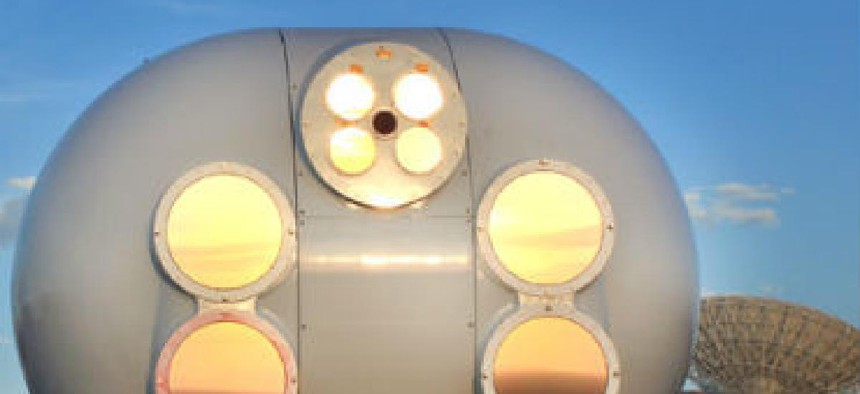NASA tests lasers to bring true broadband to space

New system could ease bottlenecks for mission-critical video, images and other data.

NASA's Lunar Laser Communication Demonstration system includes ground terminals in White Sands, N.M.
(Photo by Robert LaFon NASA/GSFC)
NASA's Deep Space Network has used radio frequency communications for more than four decades to support space exploration, but the agency believes lasers could be the next giant leap forward in communications.
NASA announced Oct. 23 that its Lunar Laser Communication Demonstration (LLCD) system successfully used a pulsed laser beam to transmit data 239,000 miles between Earth and the moon and easily achieved the fastest download rate ever transmitted in space -- 622 megabits per second (Mbps).
LLCD, hosted aboard the Lunar Atmosphere and Dust Environment Explorer that NASA launched in September, is a short-term experiment and precursor to a larger mission called the Laser Communications Relay Demonstration set to launch in 2016. LCRD will consist of two optical communications terminals that can forward and store data via laser communications at up to 1.25 gigabits per second coded and 2.88 Gbps uncoded.
NASA's first effort at using laser beams instead of radio waves for two-way communication successfully transmitted data at high rates of speed and accuracy and demonstrated error-free data upload rates of 20 Mbps.
"LLCD is the first step on our road map toward building the next generation of space communication capability," said Badri Younes, NASA's deputy associate administrator for space communications and navigation. "We are encouraged by the results of the demonstration to this point, and we are confident we are on the right path to introduce this new capability into operational service soon."
Capabilities in radio frequency communication have essentially reached their peak, sometimes creating bottlenecks for mission-critical video, images and other data transmitted from NASA's many satellites. The Lunar Reconnaissance Orbiter, for example, requires several minutes to transmit a single high-resolution image of the moon's surface to Earth at its peak speed of 100 Mbps.
NASA believes future optical communications systems will be able to transmit data 10 to 100 times faster using a quarter less power, which will allow scientists to add 3-D video to the catalog of data types future satellites or rovers could beam back to Earth.



